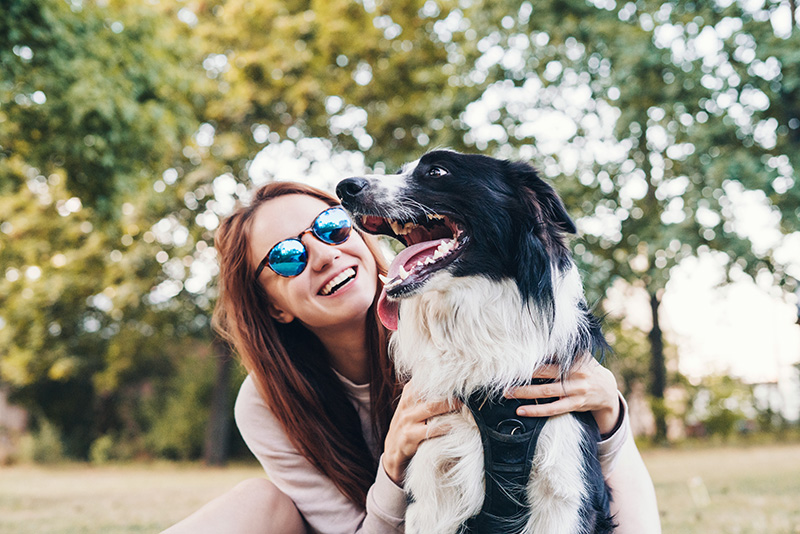Selecting the best dog harness involves considering your dog’s size, breed, and activity level. Opt for a harness that fits securely without causing discomfort, and prioritize durable, breathable materials. Adjustable straps ensure a custom fit, while specific harness styles cater to different needs, such as walking, hiking, or training. Comfort, safety, and functionality should guide your choice.
Benefits of Using a Dog Harness
Switching from a collar to a harness can have numerous benefits for both you and your dog. A harness can provide better control during walks, reduce strain on your dog’s neck, and prevent pulling. One excellent option is a dog harness with handle that can offer added control and security during walks or in crowded places. The American Kennel Club states that dogs with respiratory problems benefit most from wearing a harness. Harnesses distribute the pressure across a larger area of your dog’s body, unlike collars, which concentrate pressure on the neck.
Another significant benefit is that harnesses can help prevent injuries, especially in energetic dogs that tend to pull a lot. Dogs can severely hurt their trachea and neck with regular collars. Additionally, harnesses can deter small dogs from slipping out during walks, giving owners peace of mind.
Types of Dog Harnesses
There are several types of dog harnesses to choose from. Knowing the distinctions will enable you to select the ideal one for your pet:
- Back-Clip Harnesses: This type is ideal for well-trained dogs who walk calmly without pulling. Its leash attachment on the back makes walks more pleasant and less stressful.
- Front-Clip Harnesses: Front-clip harnesses are great for training purposes. They help control pulling by allowing you to redirect your dog’s attention back to you. This type of harness will attach the leash to the front, making it easier to communicate with your dog.
- Dual-Clip Harnesses: Dual-clip harnesses offer versatility, allowing you to attach the leash to the front or the back. This is perfect for dogs who are transitioning from training to regular walks.
- Step-In Harnesses: As the name suggests, step-in harnesses require the dog to step into them. They are easy to put on and take off, making them perfect for dogs who dislike having a harness slipped over their head.
What to Look for in a Dog Harness
Choosing the proper harness involves considering several factors to ensure comfort and functionality:
- Size and Fit: A well-fitted harness should be snug but not tight. The materials should sit flat against your dog’s body without bunching or twisting.
- Material: Use durable and comfortable materials like nylon, mesh, or leather. Ensure the harness is lightweight and breathable, especially for active dogs or those who wear it for extended periods.
- Design: The harness design should include padded areas to prevent discomfort and chafing. Adjustable straps are also crucial for customizing the fit to your dog’s unique shape.
- Safety Features: Reflective strips enhance visibility during nighttime walks. Some harnesses also come with a handle for better control, which is handy for larger or more energetic dogs.
How to Measure Your Dog for a Harness
Accurate measurements ensure a comfortable and practical fit for your dog’s harness. Here’s a simple guide on how to measure your dog:
- Neck: Gently measure your dog’s neck at the base, where the collar is usually worn. Make sure the tape is snug but tight enough.
- Chest: Measure the widest part of the chest, usually just behind the front legs. Again, the tape should be snug but not tight to ensure comfort.
- Consult the sizing chart supplied by the harness manufacturer to determine the appropriate size. Most harnesses come with adjustable straps, making it easier to get the perfect fit.
For a more detailed guide, check out the comprehensive guide by Whole Dog Journal. Accurately measuring your dog can save you time and the inconvenience of exchanges or returns.
Adjustment and Fit
Proper adjustment is critical to ensuring your dog’s comfort and safety. Follow these steps for a secure fit:
- Securely fasten the harness onto your dog and adjust the straps for a comfortable fit. The ideal harness tension is between snug enough to hold the wearer in place and loose enough to provide flexibility. Verify that two fingers can fit between your dog’s body and the harness. This ensures the harness is tight and prevents skin irritation or discomfort.
- Ensure the harness does not rub against sensitive areas, especially the armpits and back of the front legs. Adjust the straps to avoid any areas of irritation or chafing.
For additional guidance, check out VetStreet’s valuable resource on adequately fitting your dog with a harness. An appropriately adjusted harness enhances comfort and control during walks, making them more enjoyable for both you and your furry friend.
Caring for Your Dog Harness
Maintaining your dog’s harness is essential for its hygiene and longevity. Here are some tips for proper care:
- Regular Inspection: Regularly inspect the harness for signs of wear and tear. Look for frayed edges, broken buckles, or any other damage that might compromise its effectiveness.
- Cleaning: Clean the harness according to the manufacturer’s instructions. Most harnesses are machine washable, but some may require hand-washing with mild detergent.
- Storage: The harness must be stored in a cool, dry place when not in use. Avoid long-term exposure to direct sunlight, as UV radiation can deteriorate the material.

